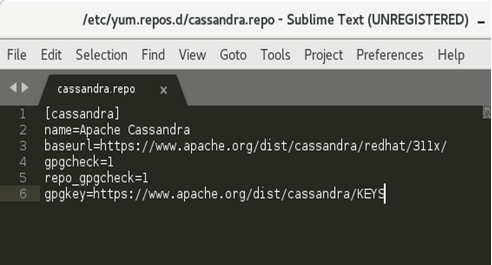

If everything went OK, you should see this: Installing Cassandra When establishing a SSH connection again, test to see if everything is set properly by running: java -version You should now reboot your VPS so everything is updated: sudo reboot Sudo update-alternatives -set javaws /usr/local/java/jdk1.8.0_65/bin/javaws Sudo update-alternatives -set javac /usr/local/java/jdk1.8.0_65/bin/javac Sudo update-alternatives -set java /usr/local/java/jdk1.8.0_65/bin/java

Sudo update-alternatives -install "/usr/bin/javaws" "javaws" "/usr/local/java/jdk1.8.0_65/bin/javaws" 1 Sudo update-alternatives -install "/usr/bin/javac" "javac" "/usr/local/java/jdk1.8.0_65/bin/javac" 1 Sudo update-alternatives -install "/usr/bin/java" "java" "/usr/local/java/jdk1.8.0_65/bin/java" 1 Next, run the following lines so when the command “java” is called, it’s done so by the right VM. To make it the default Java VM on your VPS, add these lines to the /etc/profile file:īy scrolling down after running: sudo nano /etc/profileĪnd pasting it at the end of the file, like so:Īfter you’ve done this, press CTRL+O to save and CTRL+X to exit. You should now move it to the proper folder: You can find a tutorial on how to setup an FTP server here. Once you’ve downloaded it, transfer it to your VPS using FTP or any other tool. After you’ve created your account, download either the 32-bit or the 64-bit (recommended) version of Java 8. It requires a free account, which you can register here. The Cassandra documentation highly recommends the Oracle Java VM 8, so you’ll have to download it from Oracle’s website. Make a temporary folder on your home directory to install Java.

In this tutorial, you’ll learn how to install Cassandra, the Oracle Java VM, which is highly recommended for Cassandra, and how to run your first test single-node cluster. Cassandra, or Apache Cassandra, is a highly scalable open source database system, achieving great performance on multi-node setups.


 0 kommentar(er)
0 kommentar(er)
